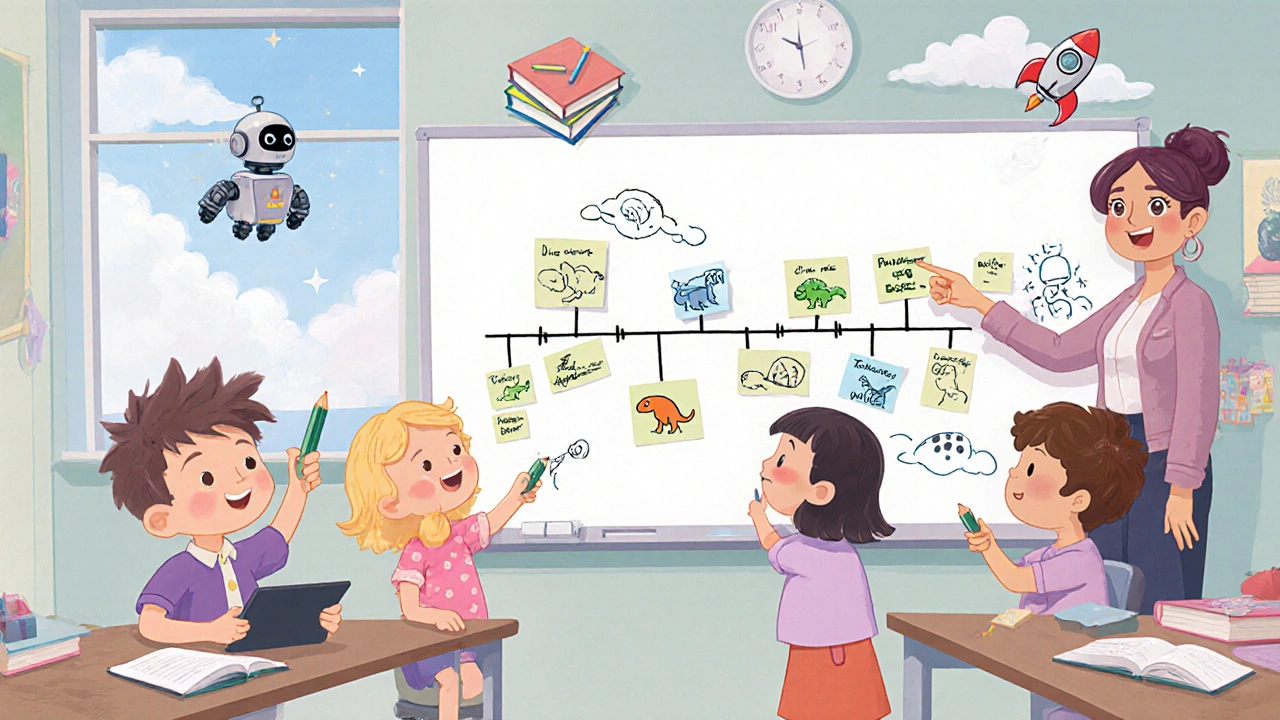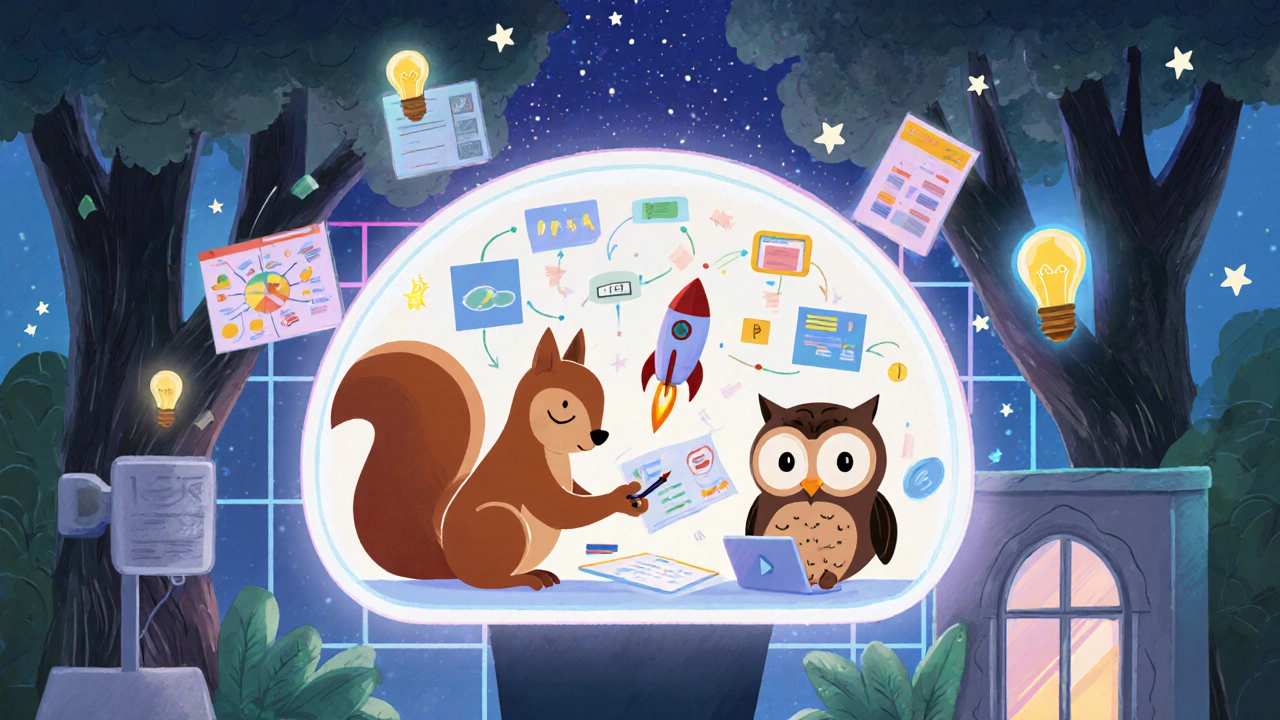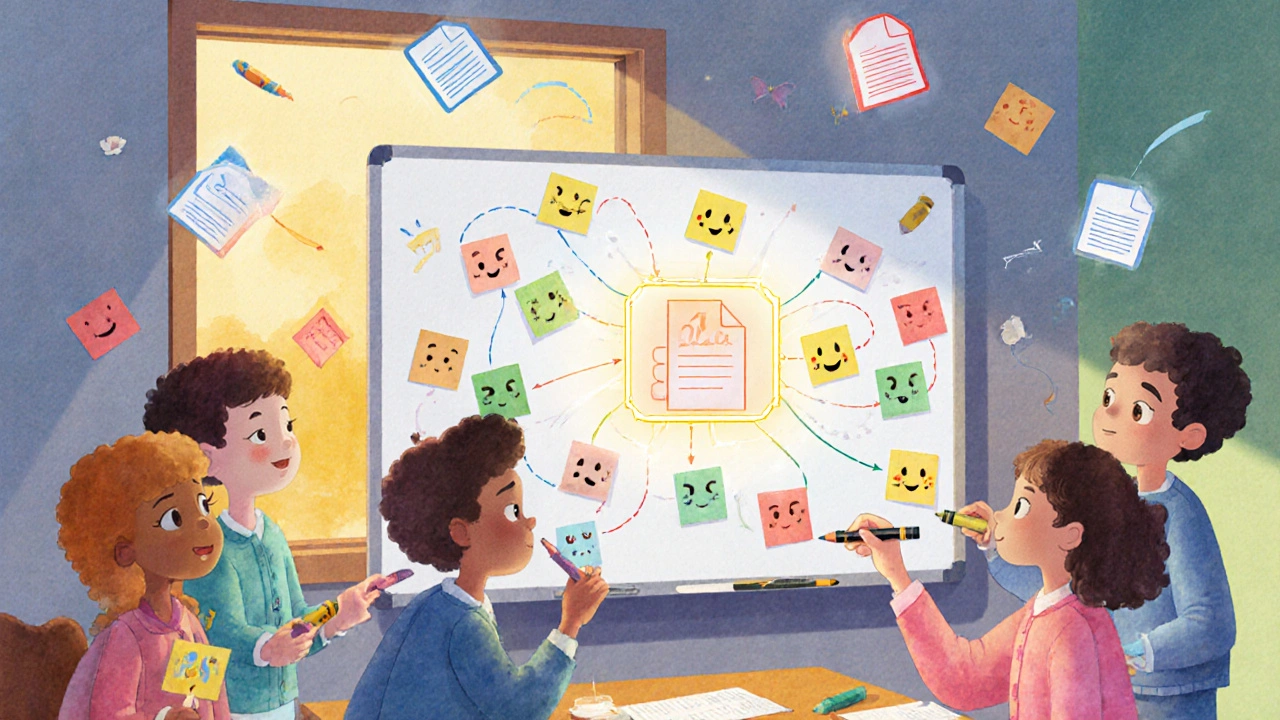Imagine sitting in a virtual meeting, sketching out a workflow on a digital whiteboard while three teammates edit the same proposal right beside you-no switching apps, no sending files back and forth. That’s not science fiction. It’s what real-time document collaboration in modern Unified Communications (UC) platforms has become.
Why Whiteboards and Co-Authoring Are No Longer Optional
Five years ago, teams used to jump between tools: start a Zoom call, share a PowerPoint, then open Google Docs to edit. After the meeting, someone had to manually copy notes from a whiteboard screenshot into a shared folder. It was messy. It was slow. And it wasted hours every week. Today, UC platforms like Microsoft Teams, Zoom, and Google Workspace have merged communication and content creation into one seamless flow. The shift isn’t just about convenience-it’s about keeping ideas alive. When you can draw a diagram during a brainstorm and immediately turn it into a shared document, you reduce friction. You keep people engaged. You stop losing ideas because someone forgot to save the screenshot. According to TechValidate’s 2023 survey, 68% of Microsoft Teams users say co-authoring is essential to their daily work. That’s not a small number. It’s a signal: if your team isn’t using real-time collaboration, you’re working harder than you need to.How Zoom Whiteboard Works-And Where It Falls Short
Zoom launched its upgraded whiteboard in April 2022, and it quickly became popular in classrooms and small teams. The tool lets you draw freehand, drop in images or PDFs, and use pre-made templates for flowcharts, mind maps, and even icebreaker activities. Educators love it because they can prepare a whiteboard ahead of time and email it to students before class. But here’s the catch: Zoom whiteboards don’t auto-save. If you don’t click “Save,” everything disappears after the meeting ends. And if you’re in a session with more than 10 people all drawing at once? The lag kicks in. Users on Reddit’s r/RemoteWork reported a 20-minute timeout for inactive boards-meaning if you step away to grab coffee, your work vanishes unless you manually save it. Also, Zoom’s whiteboard doesn’t connect directly to your files. You can’t edit a Word doc or Excel sheet inside the whiteboard. You can only paste screenshots. That means if someone makes a change to the original file, the whiteboard stays frozen in time. It’s a snapshot, not a living document.Microsoft Teams: The Enterprise Powerhouse
Microsoft Teams doesn’t just have a whiteboard-it has a whole ecosystem. The whiteboard is built on SharePoint and OneDrive, so every sketch, sticky note, or diagram is stored as a file you can find later. It syncs automatically. It version-controls changes. You can even open the whiteboard as a standalone file in your Teams channel and keep editing it days after the meeting. The real advantage? Deep integration with Office apps. You can insert a live Excel table into your whiteboard. You can embed a Google Doc (via link) and have everyone edit it side-by-side without leaving the meeting. And because Teams is tied to the entire Microsoft 365 suite, admins can control permissions, audit access, and ensure GDPR and FERPA compliance-something schools and hospitals need. But it’s not perfect. A 2023 Microsoft Tech Community thread found that 37% of users reported sync issues when five or more people edited the same whiteboard at once. Sometimes, notes disappear or overlap. And setting it up? It’s not plug-and-play. You need to configure policies, clear cached accounts, and sometimes even create custom “Action Tiles” in the Teams interface. That’s fine for IT departments-but not for a small business with no tech support.
Google Jamboard: Simple, But Limited
Google Jamboard was one of the first to try merging physical and digital whiteboards. Launched in 2017 as a 55-inch touchscreen device, it now works on phones, tablets, and laptops. It’s dead simple: open the app, draw, add sticky notes, snap a photo of a sketch, and it auto-cleans up the lines into crisp shapes. Its biggest strength? Integration with Google Workspace. You can drag and drop a Google Doc, Sheet, or Slide directly onto the Jamboard canvas. Everyone sees changes in real time. And because Google saves everything automatically, there’s no risk of losing your work. But here’s the problem: only 25 people can edit at once. That’s fine for a small team, but not for a company-wide workshop. Also, mobile support is weak. On Android, the app often crashes when you try to paste a large image. And there’s no template library like Zoom’s. You start from a blank slate every time.What About Miro and Mural?
If you’ve ever tried to map out a product roadmap or design a user journey, you’ve probably used Miro or Mural. These aren’t part of Zoom or Teams-they’re standalone tools. But here’s the twist: they now plug right into both platforms. You can open a Miro board inside a Zoom meeting. You can share a Mural canvas as a tab in Microsoft Teams. That means you get the power of a dedicated collaboration tool (thousands of templates, advanced layouts, integrations with Jira and Slack) without leaving your UC app. No Jitter reported in 2023 that these tools are growing fast, especially among design teams, product managers, and consultants. They’re not for quick brainstorming-they’re for deep, persistent collaboration. If your team does complex planning, Miro might be a better fit than Teams’ whiteboard.Real-World Use Cases: What Works and What Doesn’t
In classrooms, Zoom’s template library is a game-changer. Teachers use pre-built grids for math equations, Venn diagrams for literature discussions, and blank timelines for history lessons. Students draw directly on the board during breakout rooms. At CU Denver, they’ve seen a 40% increase in student participation since switching to digital whiteboards. In enterprise sales teams, Microsoft Teams wins. A rep can share a live PowerPoint during a client call, annotate it with the team, and then save the whiteboard as a follow-up document-all without switching apps. The client gets a polished summary, not a blurry screenshot. But in fast-moving startups? Simplicity wins. One SaaS company in Exeter switched from Teams to Google Jamboard because their team of 8 couldn’t handle the complexity. They needed to draw, share, and move on-no setup, no policies, no IT tickets. Jamboard did that.
The Big Picture: From Meetings to Persistent Workspaces
The future isn’t just about better whiteboards. It’s about erasing the line between meetings and documents. Right now, you still have to save, name, and organize your whiteboard manually. But platforms are moving toward automatic persistence. Microsoft is testing Loop components that turn whiteboard notes into live, editable cards in Teams. Zoom is adding AI that suggests organizing your doodles into bullet points. Clevertouch’s latest displays have 16ms latency-so your pen feels like it’s on paper. The goal? When you end a meeting, your whiteboard doesn’t disappear. It becomes a living project page. Your notes turn into tasks. Your sketches turn into wireframes. Your sticky notes turn into Jira tickets. That’s the real win-not the tech itself, but what it enables: teams that think, create, and act in one continuous flow.Which Tool Should You Use?
Here’s a quick guide based on your needs:- Use Zoom Whiteboard if you’re in education, need templates, and want quick setup. Just remember to save manually.
- Use Microsoft Teams if you’re in enterprise, use Office 365 daily, and need version control, compliance, and deep file integration.
- Use Google Jamboard if you live in Google Workspace, want zero setup, and work with small teams under 25 people.
- Use Miro or Mural if you’re doing complex planning, design, or agile workflows-and don’t mind opening a separate tab.
There’s no single best tool. But there is a best choice for your team’s workflow. Pick the one that removes the most friction-not the one with the fanciest features.
What’s Next for Real-Time Collaboration?
The next big leap will be AI-assisted collaboration. Imagine saying, “Turn this sketch into a流程图,” and your whiteboard auto-generates a professional diagram. Or having your meeting transcript pull out action items and drop them into a shared doc. We’re already seeing early versions of this. Zoom’s roadmap includes AI that organizes sticky notes by topic. Microsoft’s Loop tool can turn bullet points into interactive cards. Google is testing smart suggestions that turn doodles into icons. But the biggest challenge remains: equity. TechValidate found that 63% of distributed teams struggle to get everyone to contribute equally on digital whiteboards. The loudest voices still dominate. The quiet ones get left out. The solution? Design better moderation. Assign roles. Use anonymous sticky notes. Set time limits. Tech helps-but human habits decide if collaboration works.Can I use whiteboard and co-authoring features without a paid UC subscription?
Most platforms offer limited free versions. Zoom’s whiteboard is available on free accounts but lacks templates and saving options. Google Jamboard is free with a Google account and allows full collaboration. Microsoft Teams whiteboard is only available with a paid Microsoft 365 subscription. If you need persistent collaboration, you’ll likely need a paid plan.
Do whiteboards work offline?
No. All major whiteboard tools require an internet connection to sync changes in real time. Some apps, like Microsoft Whiteboard, let you sketch offline and sync later-but you can’t collaborate until you’re back online. If your team often works in low-connectivity areas, consider downloading a PDF of the whiteboard before disconnecting.
How many people can edit a whiteboard at once?
Google Jamboard supports up to 25 simultaneous editors. Microsoft Teams allows 50+ users to edit a whiteboard, but performance degrades after 10-15 active users. Zoom’s whiteboard handles up to 50 participants, but drawing becomes choppy with more than 10 active contributors. Clevertouch Edge displays support 32 simultaneous touch points, ideal for in-room collaboration.
Is my whiteboard content secure?
Security depends on the platform. Microsoft Teams stores whiteboards in encrypted SharePoint drives with compliance certifications like GDPR and FERPA. Zoom saves files in the cloud with end-to-end encryption for paid users. Google Jamboard uses Google’s enterprise-grade security, but free accounts have fewer controls. Always check your organization’s data policy before storing sensitive information on any whiteboard.
Can I export whiteboard content for presentations?
Yes. All major platforms let you export whiteboards as PNG or PDF. Microsoft Teams and Zoom allow you to download the entire board as a file. Google Jamboard lets you export as image or PDF and even embed it directly into Google Slides. For best results, export at high resolution-especially if you’re printing or presenting on a large screen.
